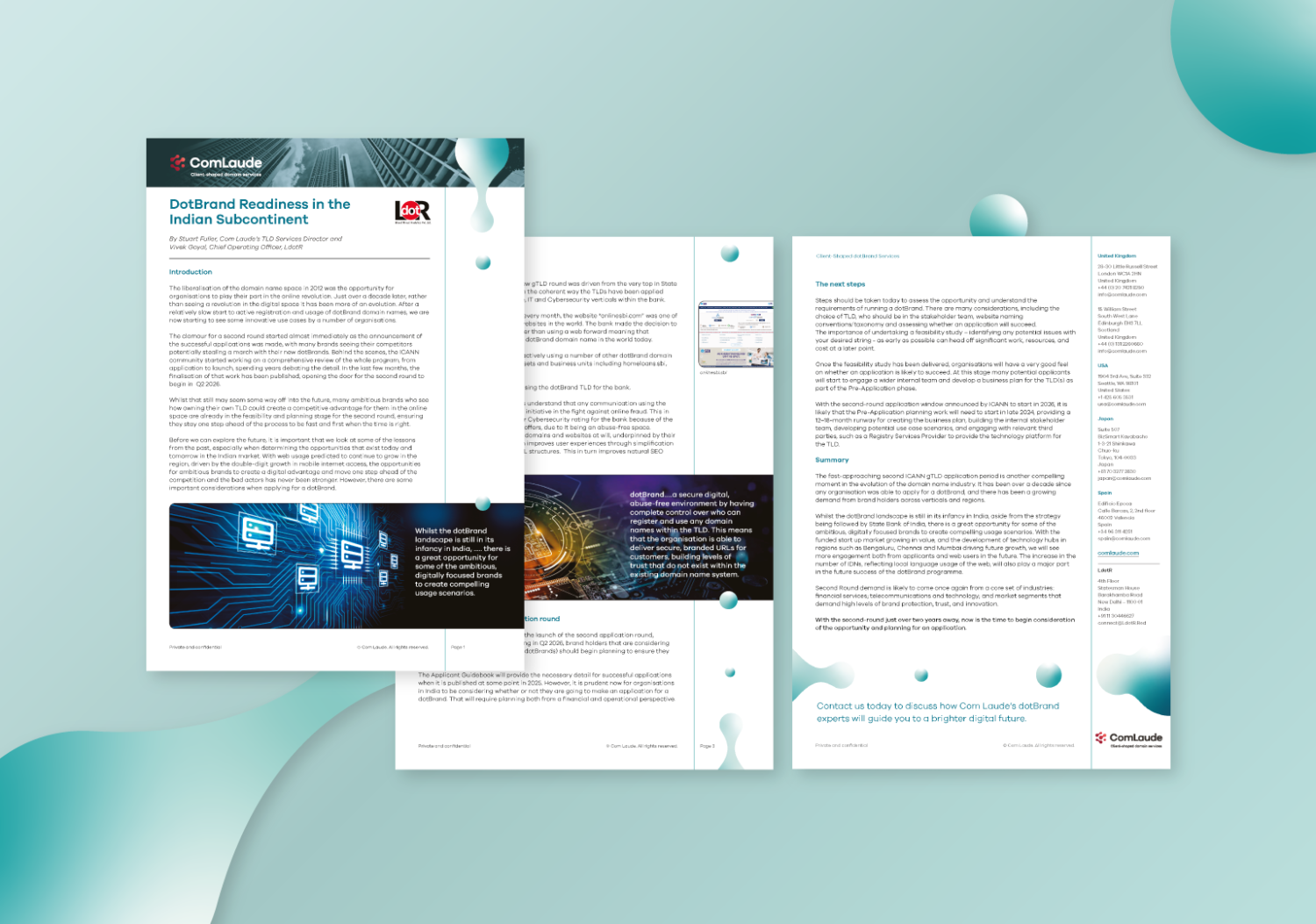Applicant Guidebook (AGB) for public comment
Last week saw ICANN be true to their word in releasing the first sections of the Applicant Guidebook (AGB) for public comment. Whilst the sections covered may not be the most difficult ones to develop, it does demonstrate the commitment of the ICANN organisation to press ahead with the necessary preparation for the second new gTLD application round, which is due to open in the second quarter of 2026.
The sections open for public comment cover important topics including Universal Acceptance, Geographic Names, how conflicts of interest will be dealt with, the issue of blocked strings, and freedom of expression. Unlike the 2012 Round, where the policy that needed to be translated into an AGB were a set of high-level principles, the Subsequent Procedures (SubPro) working group spent many years reviewing learnings from that round and developing detailed policy recommendations together with suggested guidance for how best to implement them, using the 2012 AGB as a starting point.
While there are certainly aspects of the next round implementation which will be more complicated – for example the rules on string similarity and developing an appeals mechanism (should the Board approve recommendations on this) – drafting these first sections was relatively straightforward. The draft sections should not contain many surprises for those who were involved in the first application round or are familiar with the SubPro policy recommendations.
Some of the updates are simply short disclaimers or “health warnings”, such as the draft text on Applicant Freedom of Expression and Universal Acceptance, whilst there is a bit more meat in the detail on what constitutes a conflict of interest.
The sections on Reserved, Blocked and Geographic Names will not please every potential applicant and it is likely that this is where some of the most interesting comments during the next six weeks will be submitted. Last week ICANN announced that the string “Internal” will likely be blocked from future application for technical stability reasons. What constitutes a Geographic Name and how these should be treated, in terms of prohibitions on and permissions for use, was one of the most disputed aspects of the 2012 Round. SubPro therefore devoted considerable time to developing the policy for this for the next Round. Although some will not be happy with this section of the AGB, it does faithfully reflect the difficult compromise that was reached by that multistakeholder effort.
One section that is new to this round of the gTLD Program is that of the Predictability Framework, which outlines procedural steps to address what former US Secretary of State Donald Rumsfeld once referred to as “unknown unknowns”. This section also introduces a new team, the Standing Predictability Implementation Review Team (handily called SPIRT) who will be called into action where there are non-minor unknowns to address with the program. The Charter that will set the roles and responsibilities of the SPIRT is yet to be drafted, with a call for volunteers to work on this having just been issued.
The comment period will remain open until the 19th of March, just after the ICANN 79 meeting in San Juan ends, where in-person debate is likely to add to the written comments on the text.
Other sections of the Applicant Guidebook will continue to be drafted and debated by the teams working on the second round while the current public comment period is open, with ICANN aiming to publish further draft sections on a quarterly basis. Based on the second application round timeline, the full finalised AGB should be published by May 2025, at which point we will have full details of the costs, rules and conditions for making an application for a new Top-Level Domain.
In parallel with the work on the AGB, other important aspects of the program are also being developed, including the Registry Service Provider Evaluation process which is scheduled to commence later this year. The Applicant Support Program is also due to be launched later in 2024, with the details and eligibility of the initiative due to be open to public comment in mid-February.
At the time of writing, ICANN has also just published for comment its proposed String Similarity Guidelines, intended to guide the future evaluators in their assessment of whether TLD strings are too similar to be able to coexist. These warrant a detailed review – more to follow.
It’s clear that over the coming months, as we move closer to the target next round application window, the publication of materials for review and comment will ramp up
Lars Hoffman, VP of New gTLD Program Management at ICANN, stated in his blog that the publication of these first AGB sections for public comment is, “an important milestone in the effort to implement the New gTLD Program”. There have been many dead ends and complicated diversions on the journey to a second application round but with the updated AGB language now available, just perhaps the road ahead is becoming much clearer.

Learn more about the opportunities that exist today and tomorrow in the dotBrand landscape